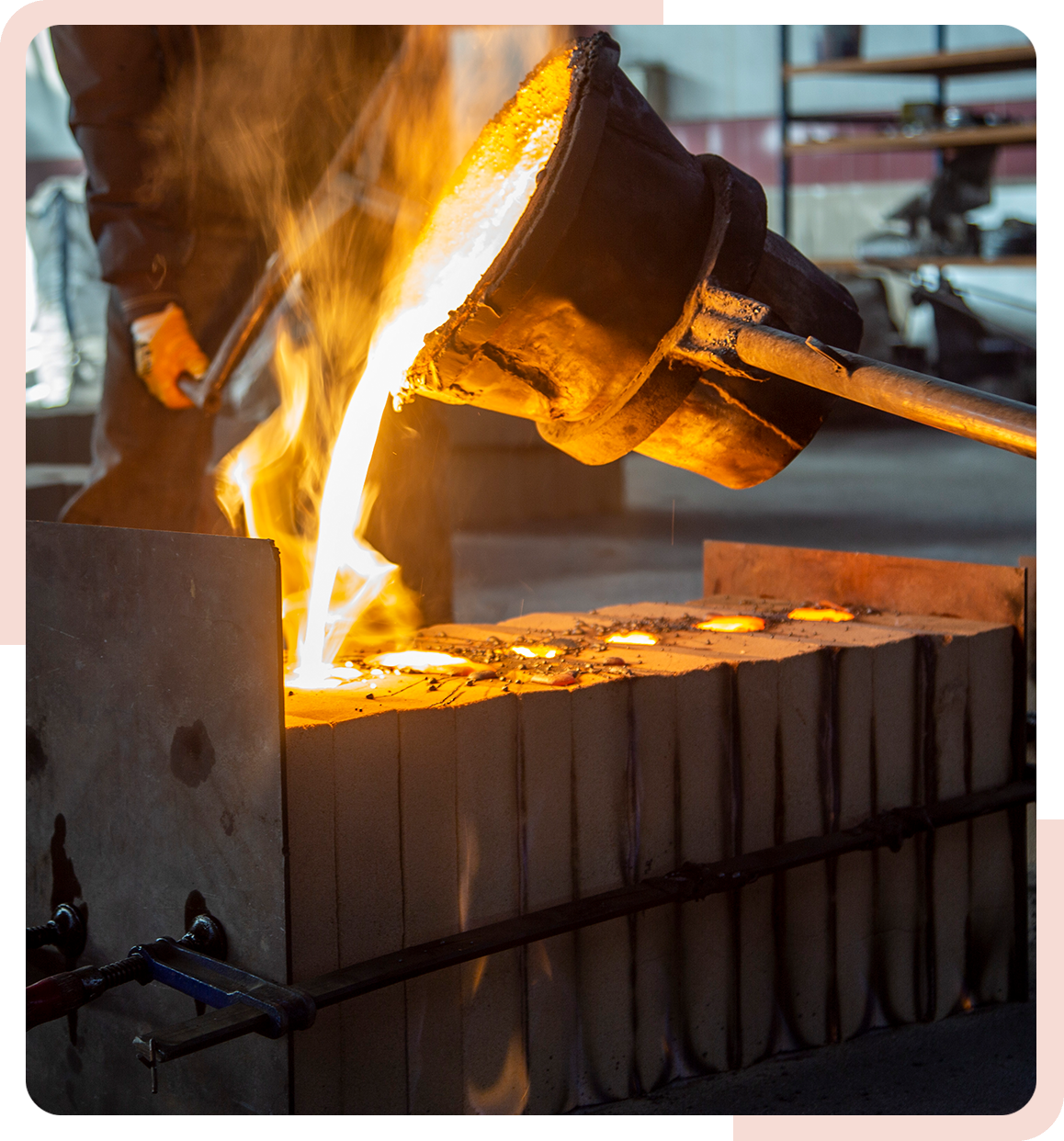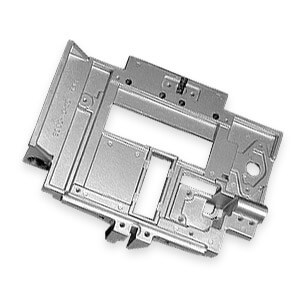Why Precision aluminum casting Supports Sustainable and Eco-Friendly Manufacturing
Recognizing Aluminum Casting: A Comprehensive Guide to Its Applications and benefits
Aluminum casting is a process that transforms liquified aluminum into strong types through different techniques. This approach offers noteworthy advantages, such as light-weight strength and rust resistance. It discovers applications in countless markets, mirroring its convenience. However, understanding the complexities of aluminum casting and its finest methods can considerably impact the quality of the last product. Exploring these components reveals the real possibility of aluminum casting in modern manufacturing.
The Essentials of Aluminum Casting
Aluminum casting is a manufacturing process that transforms liquified aluminum into strong items with numerous strategies. This process starts with home heating aluminum up until it reaches its melting point, enabling it to move right into molds. There are numerous methods of aluminum casting, consisting of sand casting, pass away casting, and financial investment casting, each ideal for different applications based upon style complexity and manufacturing volume.
In sand casting, molds are developed utilizing sand, supplying versatility for elaborate forms. Pass away casting involves forcing liquified aluminum into a steel mold under high stress, causing repeatable and precise parts. Financial investment casting, on the various other hand, utilizes a wax pattern that is covered with ceramic to create in-depth components.
After the aluminum cools down and solidifies, the molds are eliminated, revealing the finished products. This casting procedure is important in numerous sectors, consisting of auto, aerospace, and durable goods, allowing the development of light-weight and sturdy parts.
Benefits of Aluminum Casting
Among the key advantages of aluminum casting hinges on its ability to create lightweight yet strong parts. This unique combination makes aluminum a perfect option for numerous sectors, including automobile, aerospace, and durable goods. The integral corrosion resistance of aluminum additionally enhances the durability of the actors elements, prolonging their lifespan and decreasing the requirement for maintenance.
In addition, aluminum casting enables intricate geometries and elaborate designs, which can cause a lot more effective and visually pleasing items. The material's outstanding thermal and electric conductivity even more expands its applications, particularly in electronic devices and warm exchangers.
Aluminum recycling is highly efficient, contributing to ecological sustainability and minimizing production expenses. In general, the advantages of aluminum casting setting it as a useful and functional service for suppliers seeking to optimize efficiency while reducing weight and resource usage.
Typical Approaches of Aluminum Casting
While various methods exist for aluminum casting, each method offers distinctive advantages tailored to particular applications. The most typical techniques include sand casting, pass away casting, and investment casting.
Sand casting, recognized for its convenience, makes use of sand molds to produce complicated forms and appropriates for both big and little manufacturing runs. Pass away casting, on the other hand, utilizes high-pressure injection of liquified aluminum right into steel molds, causing exact dimensions and smooth surfaces, making it perfect for automation.
Financial investment casting, often described as lost-wax casting, involves creating a wax pattern coated with a ceramic shell. Aluminum Foundry. Once the wax is disappeared, liquified aluminum is poured into the cavity, generating elaborate layouts and outstanding surface coatings
Each of these techniques plays an important duty in the aluminum casting landscape, providing certain advantages that satisfy differing manufacturing requirements and production scales.
Applications Across Industries
The flexibility of aluminum casting techniques permits a variety of applications throughout various sectors. In the auto market, light-weight aluminum components enhance fuel performance and performance, adding to the expanding demand for electric cars. Aerospace industries make use of aluminum castings for their strength-to-weight proportion, guaranteeing security and durability in aircraft manufacturing.
The building market take advantage of aluminum casting with architectural components and structural components that resist rust and require very little maintenance. Additionally, consumer electronic devices makers use aluminum castings for real estates and frames, stabilizing aesthetic appeals with capability.
In the marine field, aluminum castings are favored for watercrafts and aquatic devices because of their resistance to saltwater rust. The clinical field uses aluminum spreadings in surgical tools and equipment, making certain precision and dependability. Generally, aluminum casting's adaptability allows it to meet the diverse requirements of multiple industries, making it a crucial manufacturing procedure.
Finest Practices for Successful Aluminum Casting
Successful aluminum casting relies upon a mix of mindful prep work, exact implementation, and extensive top quality control. Selecting high-quality aluminum alloys is vital, as they straight influence the casting's buildings and performance. Correct mold and mildew design is critical, guaranteeing that it accommodates thermal contraction and reduces problems.
During the melting process, preserving the proper temperature and staying clear of contamination are vital to achieving a consistent alloy. Additionally, making use of effective putting strategies can enhance the dental filling of molds, minimizing the probability of air pockets or additions.
Post-casting, implementing complete assessment techniques, such as aesthetic assessments and get more info non-destructive testing, ensures that issues are recognized early. Moreover, employing extensive quality assurance actions throughout the procedure helps preserve consistency and integrity in the final items. By sticking to these finest techniques, makers can significantly improve the success and efficiency of their aluminum casting operations.
Regularly Asked Questions
What Precaution Should Be Taken During Aluminum Casting?

How Can Issues in Aluminum Castings Be Minimized?
Issues in aluminum castings can be minimized via mindful mold and mildew design, appropriate temperature level control, guaranteeing tidy metal, utilizing proper putting techniques, and carrying out complete assessments to identify and attend to problems prior to finalizing the casting procedure.

What Is the Environmental Impact of Aluminum Casting?
The ecological impact of aluminum casting consists of energy-intensive processes, greenhouse gas emissions, and source extraction issues. Advancements in recycling and lasting techniques can alleviate these results, advertising a more eco-friendly strategy to aluminum manufacturing.
Can Aluminum Casting Be Recycled?
Yes, aluminum casting can be recycled effectively. The recycling procedure needs significantly much less power compared to primary aluminum production, making it an eco-friendly alternative that adds to resource conservation and decreased carbon emissions.
What Are the Costs Connected With Aluminum Casting Processes?
Costs connected with aluminum casting procedures consist of product costs, labor, devices maintenance, power usage, and mold fabrication. These elements can differ substantially based on manufacturing scale, intricacy of styles, and particular production techniques used.
Aluminum casting is a process that changes molten aluminum right into solid forms via various techniques. Aluminum casting is a manufacturing procedure that transforms molten aluminum right into solid objects with various techniques. While different strategies exist for aluminum casting, each technique provides distinct benefits tailored to details applications. The ecological influence of aluminum casting includes energy-intensive procedures, greenhouse gas emissions, and resource removal issues. Prices linked with aluminum casting procedures consist of material expenditures, labor, tools upkeep, energy usage, and mold construction.